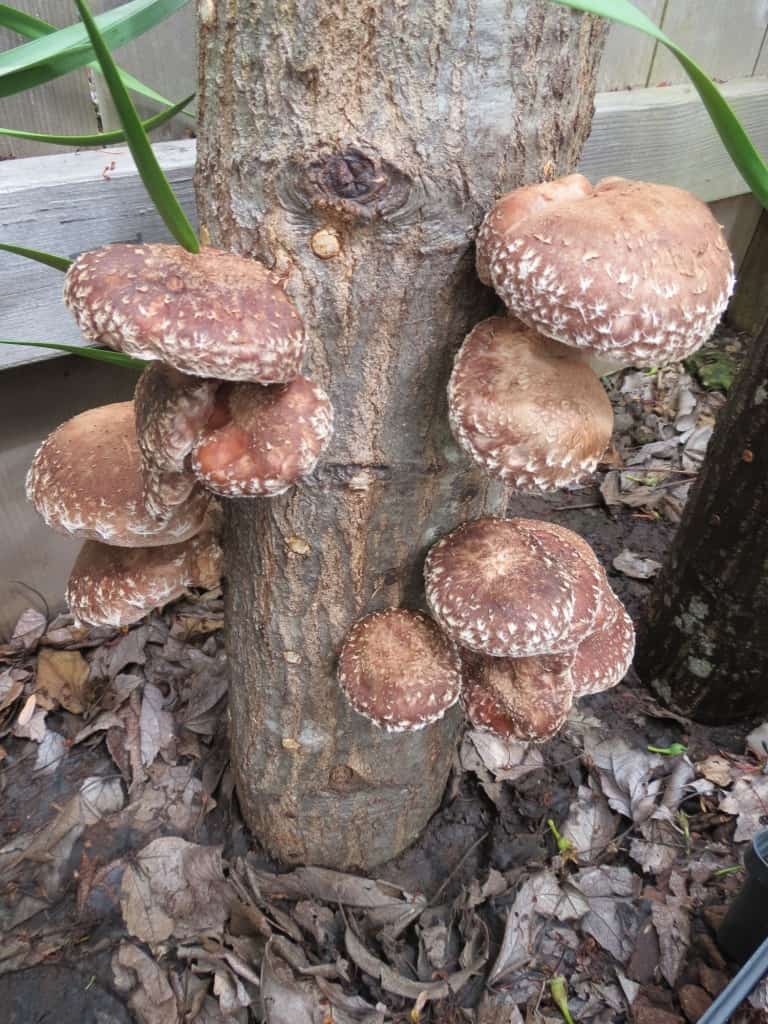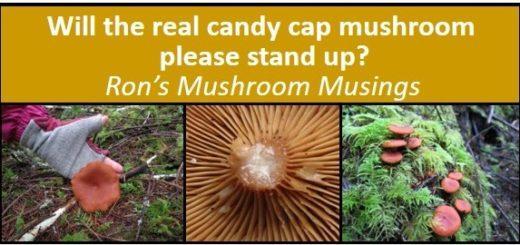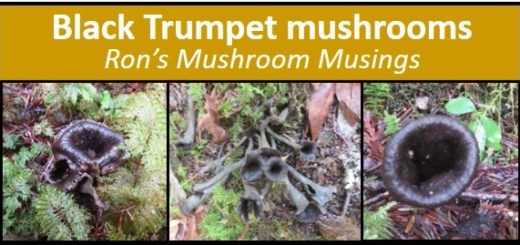Another type of Chestnut

Last spring I wrote an article about how outdoor mushroom cultivation in your own backyard can help bridge the gap when there is low availability of wild mushrooms. I have experimented with most of the usual suspects like oyster, shiitake, hericium, and chicken of the woods with mixed levels of success. Over the last few weeks we have been harvesting a nice crop of shiitake mushrooms from oak logs we inoculated several years ago. These mushrooms were taken off of our small-sized logs while the larger ones are not quite ready to start fruiting. Generally, we would submerge our logs in water for 24 hours to help initiate the fruiting process but with all the rain we’ve had, that wasn’t necessary.

Several of the mushroom caps we harvested exceeded 5-inches in diameter. All successfully reached our sauté pan where they made a wonderful stir-fry. What was most rewarding about this fruiting was it happened during a time when nighttime temperatures were consistently in the lower 40-degree range. These temperatures are considered to be at the lower end needed to initiate fruiting. Since 40 degree nights are typical during our spring season, it is nice to know that shiitake can still be productive at these temperatures as long as ample moisture is available.

Now, the newest member to be added to our mushroom cultivation list was acquired at the Christmas market where the Mushroomery was selling a variety of spawn blocks. We purchased several blocks of a mushroom species know as Pholiota adiposa or more commonly referred to as the chestnut mushroom, in reference to its cap color at maturity. This species has long been cultivated in China and Japan but is fairly new to this country. I had been seeing it in small containers being sold as a specialty or exotic mushroom alone or mixed in with several other less familiar species. The chestnut mushroom is known to be both a Saprobic fungus and a weak parasite. According to the literature I’ve read, it is not common in North America and found mostly in Europe, Japan, and China. The genus name Pholiota means scaly and refers to the mushrooms ornamental cap and stem remnants while adiposa means greasy and is a good descriptor of its cap when moist.

I started these spawn blocks indoors and after fruiting, I decided to place them outside in wooden containers filled with straw, hardwood chips, sawdust, and a top layer of Douglas fir chips to keep them moist. Several websites I visited stated they fruit at temperatures between 55 and 65 degrees so I was hoping for an early summer re-fruiting time. To my surprise and delight, they starting to pop up at the same time as our shiitake logs started to fruit. I had also taken a small chunk of spawn from one of our chestnut mushroom blocks and put it in the ground next to a shiitake log. Last year we built up this area with all manner of organic material including wood chips, sawdust, straw, leaves, twigs, and forest remnants. Then, over a several month period, we inserted mature caps from multiple species of saprotrophic mushrooms to see if any of them would develop and fruit out.

The first to emerge was none other than our newest acquisition, the chestnut mushroom. Hopefully, over the summer season, we will start to see other species we have introduced into this spawning area and there is no doubt we will see some species we neither introduced nor really wanted. That is just the way nature works. Our tried and true uninvited quest has typically been some sort of cup fungus. Although, I’m certain there is enough organic material and assortment in our cultivation area to accommodate just about any fungal species that wants a free meal.
Recipe for Lentil, Chestnut Mushrooms, and Amaranth Winter Soup
References
In general, since Pholiota adiposa is not a common North American mushroom, not much is mentioned in the literature about it. In the book Mushrooms of the Pacific Northwest, Pholiota adiposa is equated to Pholiota aurivella. The genus Pholiota is quite a large and confusing collection of fungi so specifics regarding this specific species is best left to mycologists and others better suited to resolve the perplexing who’s really who issues. Just acquire your spawn blocks or ready to eat chestnut mushrooms from reliable sources and you’ll be fine.
Pholiota adiposa – First Nature
(note the reference to edibility under Culinary Notes near the bottom of this webpage)
Trial key to the species of PHOLIOTA in the PNW – Pacific Northwest Key Council
Mushrooms of the Pacific Northwest by Steve Trudell & Joe Ammirati





